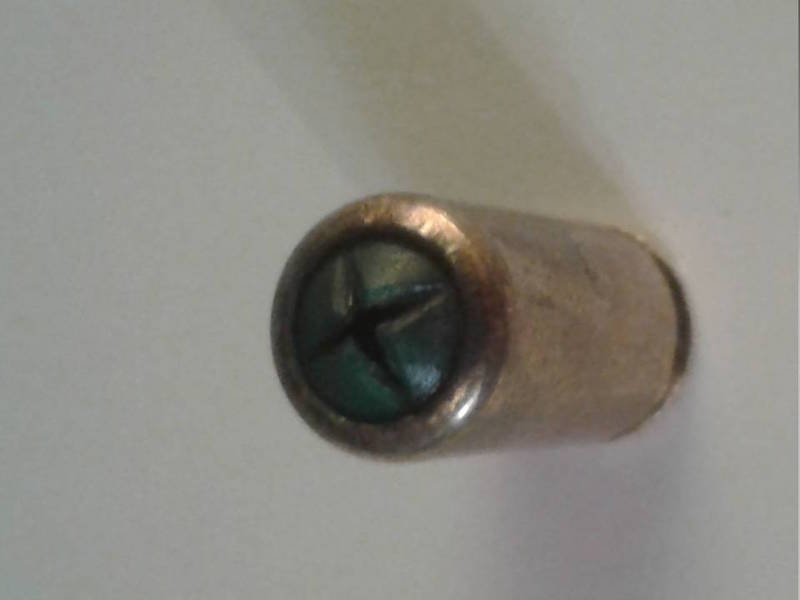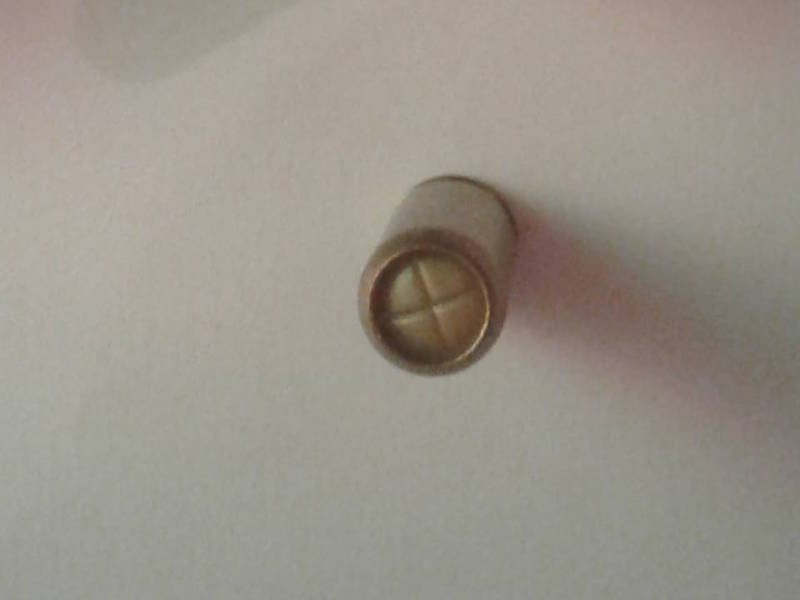Hol Dir den wöchentlichen SPARTANAT-Newsletter.
Dein Bonus: das gratis E-Book von SPARTANAT.
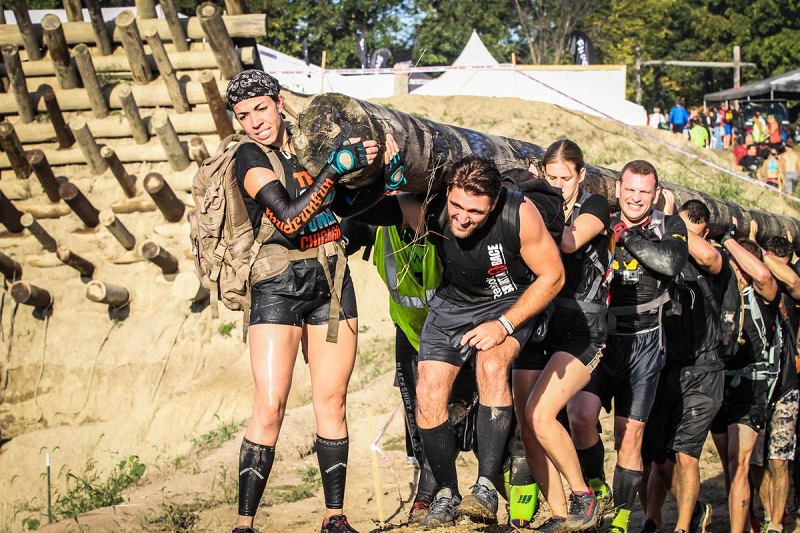
Selbstverteidigung mit Schreckschusswaffen – ein praktischer Einblick
Im letzten Jahr wurden dreimal mehr kleine Waffenscheine in Deutschland ausgestellt als in den Vorjahren. Die Sicherheitslage in Europa hat sich drastisch verschärft und das Vertrauen in die öffentliche Sicherheit schwindet zunehmend.
Im letzten Jahr wurden dreimal mehr kleine Waffenscheine in Deutschland ausgestellt als in den Vorjahren. Die Sicherheitslage in Europa hat sich drastisch verschärft und das Vertrauen in die öffentliche Sicherheit schwindet zunehmend.
 Während die Sicherheitslage von unterschiedlichsten „Experten“ öffentlich relativiert und der rasante Anstieg von Schreckschusswaffen im Volk i.V.m. der Erteilung kleiner Waffenscheine als bedenklich eingestuft wird, fühlt sich das Volk nicht mehr sicher und nutzt die wenigen Möglichkeiten, die noch verblieben sind, um das Recht auf Sicherheit und körperliche Unversehrtheit in die eigenen Hände zu nehmen.
Während die Sicherheitslage von unterschiedlichsten „Experten“ öffentlich relativiert und der rasante Anstieg von Schreckschusswaffen im Volk i.V.m. der Erteilung kleiner Waffenscheine als bedenklich eingestuft wird, fühlt sich das Volk nicht mehr sicher und nutzt die wenigen Möglichkeiten, die noch verblieben sind, um das Recht auf Sicherheit und körperliche Unversehrtheit in die eigenen Hände zu nehmen.
So, bzw. so ähnlich lässt sich die Situation als Konsens beider Seiten darstellen. Doch sind diese Schreckschusswaffen als Selbstverteidigungsmittel geeignet? Was muss man beachten? Unter welchen Voraussetzungen können diese eingesetzt werden? Am wichtigsten ist jedoch die Frage: Wie setzt man eine Schreckschusswaffe zur Selbstverteidigung ein?
Der Beste Kampf ist der, den man nicht führt.
Geht es um die Selbstverteidigung in einer Notwehrsituation (gem. §32 (2) StGB), ist erst einmal jedes Mittel recht, das angemessen ist, einen gegenwärtigen, rechtswidrigen Angriff abzuwehren. Der Grundsatz der Verhältnismäßigkeit muss dabei gewahrt bleiben. Die Rechtsprechung legt diese Verhältnismäßigkeit für jeden Einzelfall gesondert fest.
Jedoch entscheiden sich Eignung oder Nichteignung nicht durch das gewählte Mittel, sondern durch den effektiven und gekonnten Einsatz.
Doch ist man selber in einer solchen Situation, geht die objektive Betrachtungsweise schnell verloren. Über Dinge wie Verhältnismäßigkeit oder Eignung des gewählten Hilfsmittels macht man sich dann recht schnell keine Gedanken mehr. Dann ist es wichtig, sich auf die Fähigkeiten mit dem Einsatzmittel zu verlassen.
Um eine alte Weisheit von Sun Tzu ( „Die Kunst des Krieges“) zu bemühen: Der beste Kampf ist der, den man nicht führt … Ist man jedoch gezwungen einen Kampf zu führen, dann sollte man sicher sein, dass man gewinnt.
Eine Schreckschusswaffe hat eine immense psychologische Wirkung, nicht nur auf einen potentiellen Angreife, sondern vor allem auch auf die führende Person. Schreckschusswaffen vermitteln ein Gefühl der Sicherheit, denn man führt ein Hilfsmittel mit sich, das es ermöglicht, eine fremdkontrollierte Situation unter eigene Kontrolle zu bringen. Alleine dieses Gefühl gibt Selbstvertrauen, was sich in der Regel auch auf die Ausstrahlung und Körpersprache auswirkt.
Schon dieses sichere und selbstbewusste Auftreten in der Öffentlichkeit kann einen potentiellen Angreifer dazu bringen, von seinem direkten Vorhaben abzusehen. Dies ist eine Möglichkeit einen Kampf zu vermeiden.
Kommt es zu einer direkten Konfrontation, bietet eine Schreckschusswaffe im Holster eine gute Backup Lösung als Rückhalt für eine entschiedene Deeskalation.
Eine solche Situation fordert jedoch sehr viel Selbstkontrolle von der verteidigenden Person, da eine Menge an Eindrücken und Gefühlen gleichzeitig einwirken. Hier spricht man von der sog. „Fight or Flight“ Situation; also der Entscheidung zu kämpfen oder zu fliehen. Zumeist wird diese Entscheidung durch das Gegenüber getroffen, das die verteidigende Person zusätzlich unter Druck setzt. Hier einen klaren Kopf zu bewahren, funktioniert nur mit einem Plan. Dieser Plan kann sehr simpel sein, jedoch muss er zu diesem Zeitpunkt abrufbar und durchführbar sein.
Hier kommen wir zu dem zweiten Teil des obigen Zitates: „Ist man jedoch gezwungen zu kämpfen, sollte man sicher sein zu gewinnen.“ Eine Schreckschusswaffe kann hierbei gute Dienste leisten, allerdings nur sofern man weiß wie.
Deeskalation vor Konfrontation
Hat man noch genügend Abstand zum Aggressor, empfiehlt es sich immer zunächst zu deeskalieren. Hierbei ist es wichtig, möglichst ruhig zu bleiben mit dem Wissen, dass man seinem Plan folgen kann und jederzeit auf eine Alternative zurückgreifen kann – die Waffe im Holster.
Die Deeskalation folgt folgenden, grundlegenden Aspekten:
- Ruhige, deutliche Sprache
Dem Aggressor wird vermittelt, dass sein Auftreten nicht die gewünschte Verängstigung erzielt, die beabsichtigt wurde.
Wichtig ist dabei, weder zu leise zu sprechen, noch zu schreien. Das Wissen um eine Alternative Lösungsmöglichkeit im Holster bietet hierbei eine gute moralische Unterstützung. Vermeiden sollte man zunächst die direkte Androhung von Gewalt, da diese einen Aggressor dazu veranlasst, dieser Anwendung zuvor zu kommen. Auch sollte erst einmal nicht darauf hingewiesen werden, dass man eine Waffe trägt.
- Körpersprache
Eine aufrecht, offene Körperhaltung zeigt Präsenz und wirkt deeskalierend. Offen Hände in Richtung des Aggressors vermitteln eine friedliche Absicht.
Dies ist wichtig, um die Möglichkeit zu erhalten, das Aggressionsniveau der Situation zu verringern. Hierbei ergeben sich Möglichkeiten einem Kampf zu entgehen. Auch jetzt bietet die Alternativlösung im Holster psychologischen Beistand.
Die offen Handhaltung als Geste der friedlichen Absicht ermöglicht es auch, einem Aggressor klar zu vermitteln, dass er auf Abstand bleiben soll, gibt jedoch auch schnellen Zugriff auf das Holster, sofern es die Situation erfordert.
- Suche nach Fluchtmöglichkeiten
Während der Deeskalationsphase ist es wichtig, Möglichkeiten zu suchen, der Situation zu entkommen, ohne einen Kampf führen zu müssen. Bietet sich eine Möglichkeit zu Entkommen, sollte diese genutzt werden. Dies kann eine andere Person sein, die direkt angesprochen wird, oder die in der Nähe vorbei geht; manchmal reicht auch schon die Ablenkung des Aggressors durch ein Fahrzeuggeräusch oder Ähnliches.
In einer Notwehrsituation ist es keinesfalls die Aufgabe der verteidigenden Person, den Aggressor zur Rechenschaft zu ziehen oder den Behörden zu übergeben. Dies wäre falscher Heldenmut. Es geht darum, die eigene Haut unversehrt aus der Situation heraus zu bekommen, solange Sie den eigenen Körper noch bedeckt.
Die Schreckschusswaffe als Hilfsmittel der körperlichen Gewalt
Der größte Irrtum jener „Experten“, die von Schreckschusswaffen abraten, ist, dass sie diese nur als Zündgeräte für Kartuschenmunition sehen. Diese Waffen können so viel mehr!
Häufig ist eine Deeskalation nicht möglich, oder führt nicht zum Erfolg und es kommt zur direkten Konfrontation mit dem Aggressor. In diesen Fall bietet eine Schreckschusswaffe diverse Möglichkeiten zum Einsatz.
- In Anschlag bringen
Das Ziehen und Anschlagen der Waffe aus dem Holster wirkt für die meisten Aggressoren zunächst einmal sehr abschreckend. Vor allem, wenn dies auf eine professionelle Art und Weise geschieht. Wie bei der Deeskalation muss auch diese Geste vor allem verdeutlichen, dass man der Situation nicht bloß gewachsen ist, sondern sie kontrolliert.
Wenn man hierbei einen Fehler macht, kann die Wirkung ganz schnell dahin sein. Das Wühlen in der Handtasche beim Suchen nach einer Schreckschusswaffe oder endloses wegschaufeln von Kleidungsstücken um an die Waffe am Gürtelholster oder Innenbund-Holster (IWB) zu kommen, wirkt nicht nur im höchsten Maße unprofessionell und unsicher, sondern kostet sehr viel Zeit und zerstört die Glaubwürdigkeit beim Gegenüber innerhalb weniger Augenblicke.
Ist die Waffe also gekonnt und zügig präsentiert, geht es darum, dem Gegenüber nicht die Möglichkeit zu geben, die Waffe als Schreckschusswaffe zu identifizieren. Sollte dies der Fall sein, hat die Waffe kaum noch einen effektiven Nutzen.
 Zweckmäßig ist hierfür die sogenannte „low ready position“. Hierbei wird die Waffe im Anschlag mit der Mündung auf den Boden vor dem Aggressor gerichtet. Dadurch ist es für das Gegenüber nicht möglich, gegebenenfalls das Gewinde für einen Abschussbecher oder aber die Laufsperre zu erkennen. Dunkelheit oder Schatten bieten hierbei zusätzliche Unterstützung.
Zweckmäßig ist hierfür die sogenannte „low ready position“. Hierbei wird die Waffe im Anschlag mit der Mündung auf den Boden vor dem Aggressor gerichtet. Dadurch ist es für das Gegenüber nicht möglich, gegebenenfalls das Gewinde für einen Abschussbecher oder aber die Laufsperre zu erkennen. Dunkelheit oder Schatten bieten hierbei zusätzliche Unterstützung. 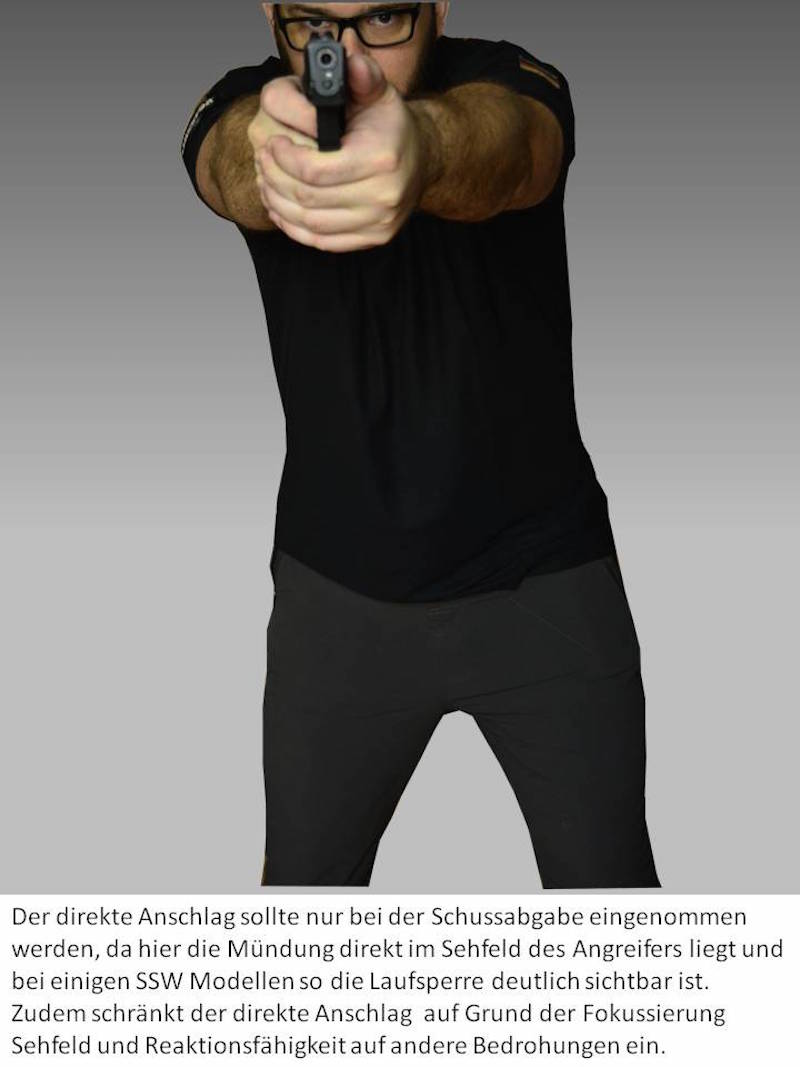
- Laute, direkte Kommandos
Die Drohung mit der Schreckschusswaffe funktioniert NUR zusammen mit einer deutlichen verbalen und körpersprachlichen Unterstützung. Wenn bei der Deeskalation noch auf eine mögliche „Zusammenarbeit“ hin gearbeitet wurde, geht es nun darum, unmissverständlich klar zu machen, wer das Sagen hat. Hierzu bedient man sich einer kurzen und knappen, unmissverständlichen Sprache, der Kommandosprache! Zu beachten ist dabei, dass die Lautstärke deutlich gesteigert wird, ohne zu schreien, oder dass sich die Stimme überschlägt.
Es ist wichtig, den Worten auch körperlich Ausdruck zu verleihen, was unter den gegebenen Umständen einer Notwehrsituation einiges an Selbstkontrolle abverlangt.
Auch in dieser Situation ist es wichtig, nach Möglichkeiten zur Flucht zu suchen und diese bei Gelegenheit zu nutzen – es geht nicht darum, einen Aggressor dingfest zu machen, sondern selber heile und so schnell wie möglich aus der Situation zu entkommen.
- Achtung! Direkter Angriff!
Sinn und Zweck war es bisher, einen Aggressor auf Abstand zu halten. Bei direkten Angriffen funktioniert dies jedoch nicht mehr. In diesen Fällen kann eine Schreckschusswaffe zwei Funktionen einnehmen:
- Schusswaffe
- Hilfsmittel der körperlichen Gewalt
Beide Funktionen erfordern einen gekonnten Umgang und fundierte Kenntnisse.
Als Hilfsmittel der körperlichen Gewalt wird die Waffe für Stöße und Schläge gegen empfindliche Körperstellen eingesetzt. Schlag gegen Schläfe
Schlag gegen Schläfe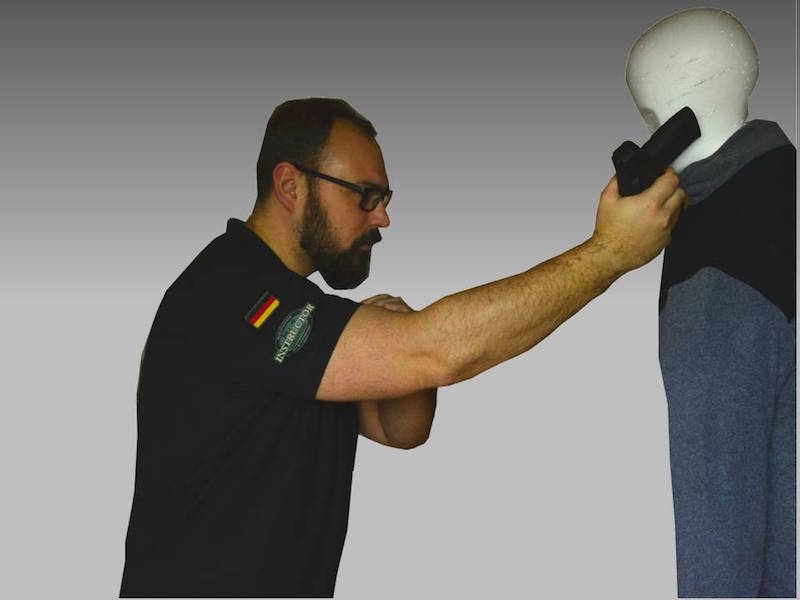 Stoß gegen Schlagader
Stoß gegen Schlagader Stoß gegen Kehlkopf
Stoß gegen Kehlkopf Stoß gegen Niere
Stoß gegen Niere
Hierdurch werden dem Aggressor Schmerzen und eventuell Verletzungen zugefügt, die es ermöglichen, aus der Situation zu entkommen.
Bis zu diesem Punkt handelt es sich bei der Schreckschusswaffe um ein Hilfsmittel der körperlichen Gewalt.
Knall- und Reizstoffmunition
Der Einsatz einer Schreckschusswaffe zum Feuern von Kartuschenmunition fällt rechtlich unter den Schussswaffeneinsatz. Hierbei wird zwischen Knallmunition und Reizstoffmunition unterschieden. Vorweg ist zu erwähnen, dass der Einsatz von Reizstoffen grundlegend nur zur Tierabwehr zulässig ist. Grundlegend deshalb, weil in einer Notwehrsituation ein Abmunitionieren von Reizstoffmunition als unrealistisch und unverhältnismäßig eingestuft wird.
Der Einsatz von Knallmunition, insbesondere bei Dunkelheit und eingeschränkter Sicht kann sehr wirkungsvoll sein, sofern entsprechend sinnvoll angewandt.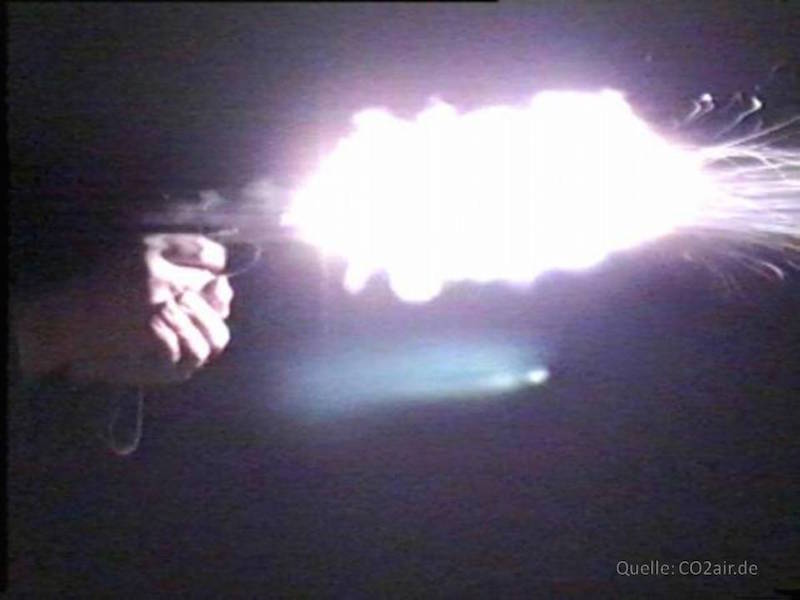
Einen Aggressor auf Abstand direkt mit Knallmunition zu beschießen kommt einem Offenbarungseid gleich. Sinnvoller ist es, dem Einsatz einen großzügigen Auftritt zu verleihen, als einen Warnschuss abzugeben. Dabei muss man darauf achten, dass man dem Aggressor keinen Grund gibt, an den eigenen Absichten zu zweifeln. Vor einer Schreckschusswaffe fürchtet sich kaum jemand, da diese, realistische gesehen, kaum eine effektive Reichweite oder gar eine letale Wirkung haben. Es ist die psychologische Wirkung, dass jemand eine Waffe auf einen richtet, von der man davon ausgeht, dass dies eine scharfe Schusswaffe ist, die effektiv ist.
Diesen Glauben beim Aggressor aufrecht zu erhalten gelingt bei einem Warnschuss nur dann, wenn man keinen Grund zum Zweifeln liefert. Also sorgt man dafür, dass ein Aggressor mitbekommt, dass man die Waffe für den Warnschuss von ihm weg bewegt – möglichst auf einen Hintergrund, der ein vermeintliches Projektil nicht erkennen lässt (z.B. Rasen, Müllsäcke, Wasser, etc.) , also Untergründe, die in der Regel keine Abpraller erzeugen. Nur wenige Angreifer sind so abgebrüht, dass Sie einen Angriff fortsetzten, nachdem auf Sie geschossen wurde.
Ist der Abstand bereits so gering, dass eine effektive Abschreckung mit einem Warnschuss nicht mehr möglich ist, oder aber es kommt bereits zu Körperkontakt, so muss man als Verteidiger genau wissen was man tut.
Handelt es sich bei der geführten Schreckschusswaffe um einen Revolver, so hat man relativ wenige Probleme. Die Waffe wird auf den Körper des Aggressors aufgesetzt und abgefeuert. Bei Selbstladepistolen sieht dies ein wenig anders aus. Setzt man diese direkt auf einen Körper auf, wird der Verschluss leicht nach hinten gedrückt und eine Schussauslösung ist nicht mehr möglich.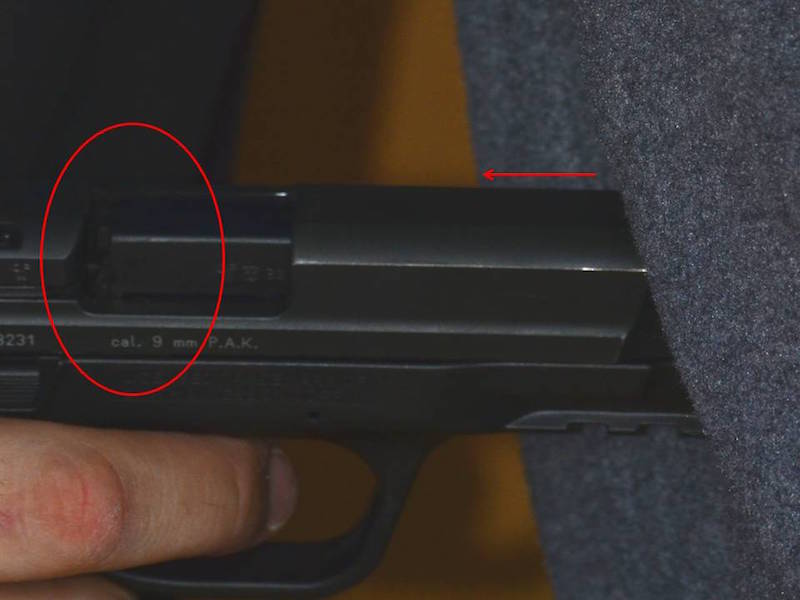
Hierbei muss man also trotz „Infight“ die eigene Kontrolle behalten und die Waffe kurz vor dem Körper des Angreifers abfeuern.Normalerweise führt dies zu einem sofortigen Abbruch des Angriffs und bietet eine hervorragende Fluchtmöglichkeit.
Die größte Wirkung entfaltet Knallmunition auf frei liegender Haut oder Haut, die nur mit einer dünnen Stoffschicht bedeckt ist. Hierbei kommt es durch die austretenden heißen Gase und die Druckexpansion zu Verbrennungen und Verletzungen beim Angreifer.
ACHTUNG: Ein Schuss gilt nach derzeitigem, rechtlichen Stand als gegebenenfalls angemessenes Mittel zur Abwehr eines Angriffes, alles darüber hinaus kann unter den Begriff des Notwehrexzess fallen. In jedem Fall muss man nach einem Schusswaffeneinsatz damit rechnen, sich einer Untersuchung wegen Körperverletzung zu stellen.
Für direkte, aufgesetzte Schüsse kann auch Reizstoffmunition verwendet werden. Die Wirkung ist in diesen Fällen ähnlich. Zusätzlich zu unverbrannten Ladungsresten und Partikeln des Kunststoffverschlusses der Patronen wird hierbei noch die Reizstoffladung in die Verletzung eingebracht.
Entscheidend ist der Abstand
Die effektive Wirkung von Knall – und Reizstoffmunition wird entscheidend vom Abstand zum Aggressor beeinflusst.
Reizstoffmunition erzeugt beim Abschuss ein Aerosol, d.h. der Reizstoff befindet sich als feine Partikel in Wolkenform in der Luft. Da diese feinen Partikel zwar relativ stark beschleunigt, aber sehr leicht sind, ist die effektive Reichweite abhängig von diversen Faktoren:
- Windrichtung
- Windstärke
- Lauflänge
- Treibladungsstärke (variiert bei unterschiedlichen Chargen)
Allen Munitionssorten gemein ist, dass die effektive Reichweite zumeist nicht größer als 3 bis 5 Meter beträgt. Entscheidend ist also der Abstand zum Aggressor, wenn man beschließt, eine direkte Einwirkung nehmen zu wollen.
Knallmunition (grüne Verschlusskappe] erzeugt in erster Linie Einen Lichtblitz und heiße, expandierende Gase. Die Reichweite ist vergleichsweise gering. Zusätzlichen werden Kunststoffpartikel und unverbrannte Ladungsreste mit hoher Geschwindigkeit aus dem Lauf in Schussrichtung beschleunigt. In einer Entfernung von ca. 1-1,5m können diese Partikel auch in die oberen Hautschichten eindringen. Bei Treffern in der Augenpartie kann es zu mittelschweren bis schweren Verletzungen kommen.
Auf dem Markt gibt es diverse Hersteller, die spezielle Flash-Munition (goldene Verschlusskappe) anbieten, welche einen besonders hellen Lichtblitz, oder aber einen besonders großes Mündungsfeuer erzeugen. Hierdurch kann es zu Verbrennungen der Haut und schweren Verletzungen von Augen und Rachen kommen.
Reizstoffmunition wird in verschiedenen Varianten angeboten. Am weitesten verbreitet sind CS (gelbe Verschlusskappe)- und Pfeffermunition (rote Verschlusskappe). Hier werden Reizstoffaerosole durch eine Treibladung aus dem Lauf heraus in Schussrichtung beschleunigt und bilden bei Austritt eine gerichtete Aerosolwolke. Die Reichweiten variieren je nach Hersteller. Reizstoffmunition ist grundsätzlich nur zu Tierabwehr vorgesehen und erzeugt neben Schmerzen, je nach Reizstoff, unkontrollierten Tränenfluss, unkontrollierten Liedschlussreflex, Atemprobleme Brennen der Haut und der Atemwege, Übelkeit und Schwindel. Je nach körperlichen Eigenheiten eines Aggressors können spezielle Symptome hinzu kommen.
Alle Munitionssorten verbindet, dass Sie bei entsprechendem Einsatz einer verteidigenden Person die Möglichkeit geben zu entkommen.
Keep it simple
Die teuerste und schönste Schreckschusswaffe nützt nichts, wenn sie einfach nur unwissend durch die Gegend getragen wird. In diesem Fall besteht eine gute Chance, dass die Waffe abgenommen und gegen eine(n) selber gerichtet wird.
Folgende Dinge sollte man beachten:
- Führen der Waffe so, dass man sie im Notfall leicht und problemlos erreichen kann
Eine Schreckschusswaffe in die Handtasche schmeißen ist eine dumme Idee, eine Taschenpistole in eine enge Jeans stecken ebenso.
Ein Gürtelholster oder IWB Holster bietet deutlich mehr Sicherheit beim Zugriff. Die Waffe soll sicher im Holster sitzen, aber jederzeit problemlos zugriffsbereit sein. Daher sollte man sich z.B. eine alternative Zugriffsposition für Fahrzeuge überlegen. Ein Tragen am Körper ist hier kontraproduktiv. Die Waffe muss zu einem passen. Eine Desert Eagle .50AE als Schreckschussvariante in den Händen einer zierlichen 1,60 m Frau dürfte wohl kaum als passende Führwaffe gelten.
Die Waffe muss zu einem passen. Eine Desert Eagle .50AE als Schreckschussvariante in den Händen einer zierlichen 1,60 m Frau dürfte wohl kaum als passende Führwaffe gelten.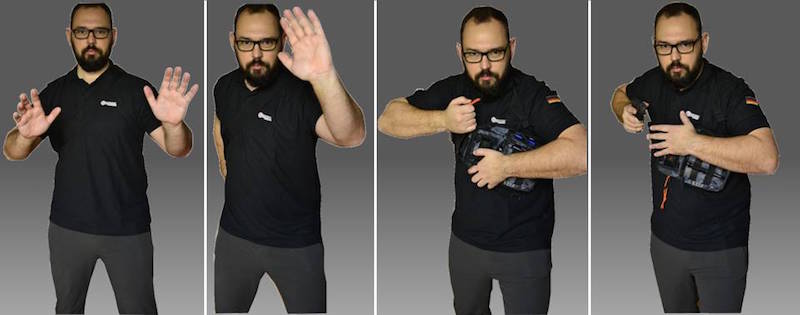 Es gibt diverse Möglichkeiten, im Alltag eine Schreckschusswaffe sicher und komfortabel zu führen, sowohl in einem Holster am Körper, als auch in Taschen. Welche Methode für eine(n) am besten ist, hängt von Verhalten, Vorlieben, Lebens- und Kleidungsstil ab. Trägt man eine Waffe in einem Holster am Körper, sind enge Kleidungsstücke z.B. keine gute Wahl; hier bietet sich das Führen in Bauch- oder Umhängetaschen an. Trägt man weite Kleidung, oder aber eine Jacke, Mantel o.ä. kann diese ein entsprechendes Holster effektiv kaschieren. Man will ja nicht gleich jedem auf die Nase binde, dass man bewaffnet ist.
Es gibt diverse Möglichkeiten, im Alltag eine Schreckschusswaffe sicher und komfortabel zu führen, sowohl in einem Holster am Körper, als auch in Taschen. Welche Methode für eine(n) am besten ist, hängt von Verhalten, Vorlieben, Lebens- und Kleidungsstil ab. Trägt man eine Waffe in einem Holster am Körper, sind enge Kleidungsstücke z.B. keine gute Wahl; hier bietet sich das Führen in Bauch- oder Umhängetaschen an. Trägt man weite Kleidung, oder aber eine Jacke, Mantel o.ä. kann diese ein entsprechendes Holster effektiv kaschieren. Man will ja nicht gleich jedem auf die Nase binde, dass man bewaffnet ist.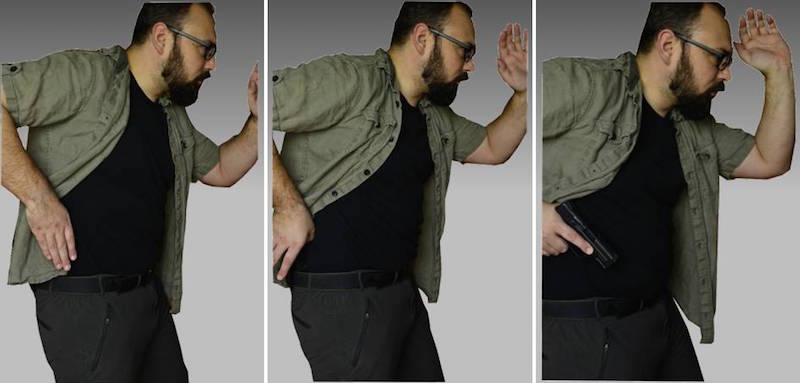
- Wissen über effektive Einsatztechniken erlangen und regelmäßig schulen
Im Stress fällt man auf das niedrigste Fertigkeitsniveau ab, welches man erlangt hat. Je Höher das Höchstniveau, um so besser agiert man auch unter Stress. Fertigkeiten zu erlangen ist eine Sache, sie zu behalten eine anderer.
- ganzheitliches Selbstverteidigungskonzept bereit legen (Plan!)
In einer Notwehrsituation kommt es auf intuitives Handeln an, Daher sollte man sich sog. standard operation procedures (sop´s) zurecht legen ( z.B. Ziehen der Waffe, Schutzhaltungen, etc.)
Auch eine Schreckschusswaffe als every day carry (EDC) zu führen ist etwas, was das Leben entscheidend beeinflusst; das muss man wollen.
- Munition kennen und entsprechend der eigenen Fähigkeiten nutzen
Je nach eigenem Handlungsplan und dem Vertrauen auf eigene Fertigkeiten kann eine unterschiedliche Aufteilung von verschiedenen Munitionssorten sinnvoll sein. Dies ist u.a. Anhängig von der Umgebung, in der man sich bewegt, dem eigenen Verhalten bei Notsituationen oder aber der Fähigkeit Gefahrensituationen richtig einzuschätzen.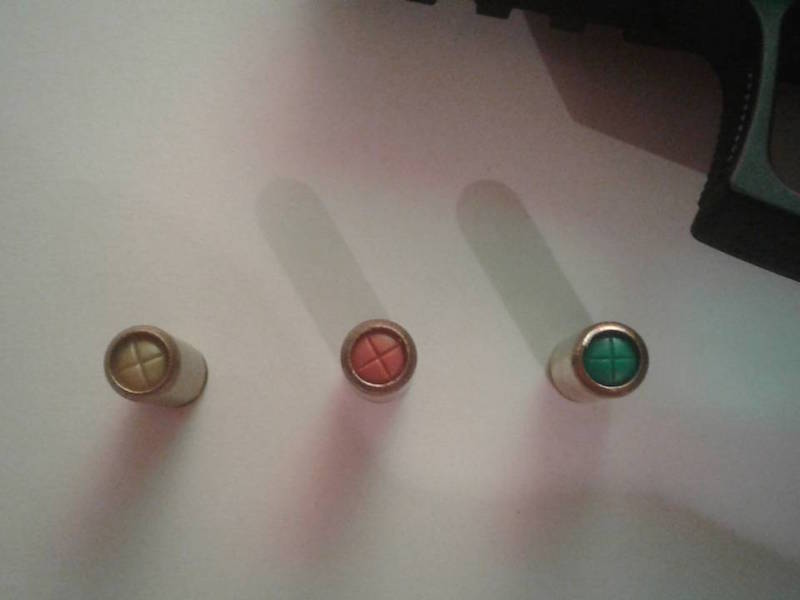
- Regeln und gesetzliche Bestimmungen kennen
In Deutschland ist das Führen von Schreckschusswaffen mit einem kleinen Waffenschein außerhalb von öffentlichen Veranstaltungen erlaubt. Dies bedeutet jedoch nicht, dass man diese zwingend offen Tragen kann oder darf. Wenn dies auch nicht verboten ist, sieht die Rechtsprechung den Schutz der öffentlichen Sicherheit vor. Hierzulande ist es eher ungewöhnlich Privatpersonen mit Waffen im öffentlichen Alltag zu sehen. Die öffentliche Meinungsbildung hat zudem dazu beigetragen, in der Bevölkerung flächendeckend eine ungesunde Abneigung gegen Waffen und Personen, die Waffen besitzen zu schüren. Somit kann das präsentieren einer Waffe bei anderen ein Gefühl der Angst auslösen, bei der sie sich gefährdet sehen. Dies wird im Zweifelsfall rechtlich als Einschränkung der Persönlichkeitsrechte gewertet und kann zu einer Anzeige führen. Klingt komisch, ist aber so.
Fazit:
Entgegen vieler „Expertenmeinungen“ bilden Schreckschusswaffen eine durchaus effektive Möglichkeit, sich selbst und ggf. Freunde und Familie in einer Notwehr-/ Nothilfesituation zu schützen bzw. der Situation unbeschadet zu entkommen. Voraussetzung hierfür ist, dass man sich mit der Materie und den notwenigen Techniken beschäftigt und entsprechende Fertigkeiten erwirbt und schult. Anderenfalls führt man nur ein Stück Metall spazieren, welches im Notfall dem Aggressor mehr nützt als einem selbst. Fakt ist jedoch auch, dass die Möglichkeiten einer Schreckschusswaffe sehr eingeschränkt sind. Als Verteidigungsmittel während eines bewaffneten Überfalls, Amoklaufs oder Terroranschlags sollte man tunlichst vermeiden, sich auf eine Schreckschusswaffe zu verlassen.
Schreckschusswaffen sind im Grunde ein großer Bluff und leben von der psychologischen Wirkung; hat man das erst einmal begriffen, kann man diese effektiv zu Schutzzwecken einsetzen. Aggressoren suchen sich in der Regel schwache Opfer, von denen kaum bis keine Gegenwehr zu erwarten ist. Mit einer Schreckschusswaffe als alternativer Lösungsoption und entsprechendem Wissen zum Einsatz kann man von einem schwachen wehrlosen Opfer zu einem selbstbewussten und sicheren Gegner werden. Alleine das reicht meist schon aus, um nicht mehr in das Beuteschema zu fallen.
Kommt es doch einmal zu einer Konfrontation bieten sicheres, selbstbewusstes Auftreten und professionelles Handeln eine sehr gute Möglichkeit, die Situation zu klären. Spätestens wenn Schüsse knallen, erhält man als Verteidiger die Möglichkeit aus einer Gefahrensituation zu entkommen – man muss einfach nur wissen, was man tut und der Situation entsprechend handeln.
Dieser Artikel stellt bei Weitem keinen kompletten Leitfaden dar, sondern soll nur einen groben Einblick geben. Wer einfach nur eine Schreckschusswaffe kauft und einen kleinen Waffenschein beantragt, gefährdet tatsächlich nur sich und alle anderen damit. Wie mit jedem anderen Werkzeug, muss man lernen damit umzugehen und es entsprechende der Gegebenheiten einzusetzen. Es hängt von Euch ab, euch darauf einzulassen und eingehender damit zu beschäftigen. Und wenn ihr Zeit und Geld investiert, um das ganze niemals anzuwenden, weil euch niemand behelligt, dann war es das doch auch wert.
Der beste Kampf ist der, den man nicht führt … muss man jedoch kämpfen, sollte man sicher sein zu gewinnen.
In diesem Sinne – seid keine Opfer!
Khi Pa
KL STRATEGIC im INTERNET: http://kl-strategic.com
KL STRATEGIC auf FACEBOOK: www.facebook.com/KL-STRATEGIC
SPARTANAT ist das Online-Magazin für Military News, Tactical Life, Gear & Reviews.
Schickt uns eure News: [email protected]
Werbung
Hol Dir den wöchentlichen SPARTANAT-Newsletter.
Dein Bonus: das gratis E-Book von SPARTANAT.


